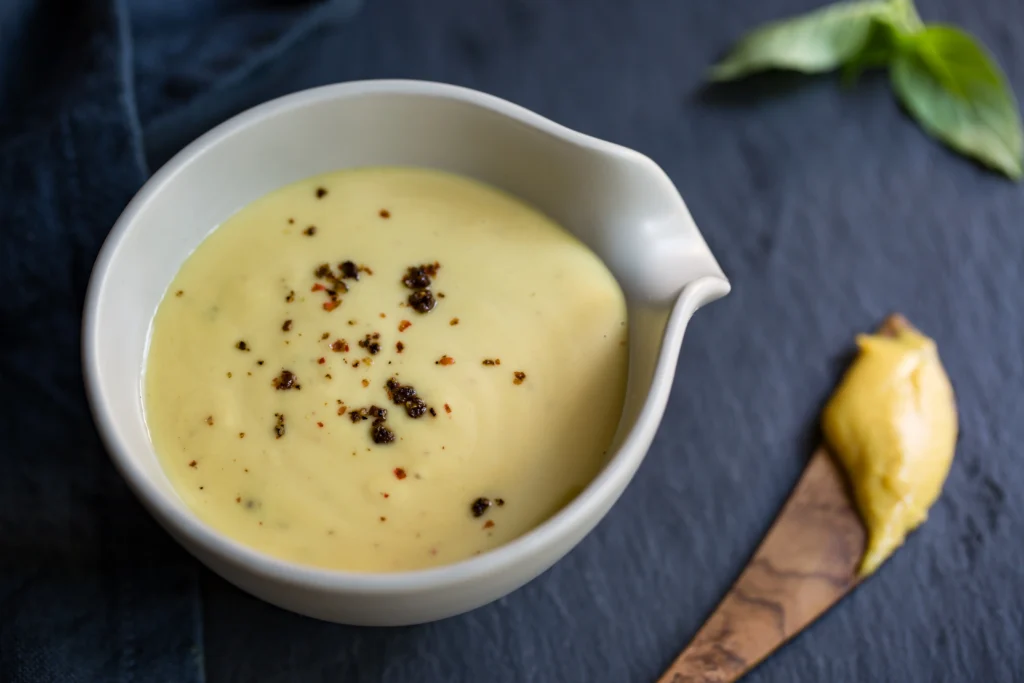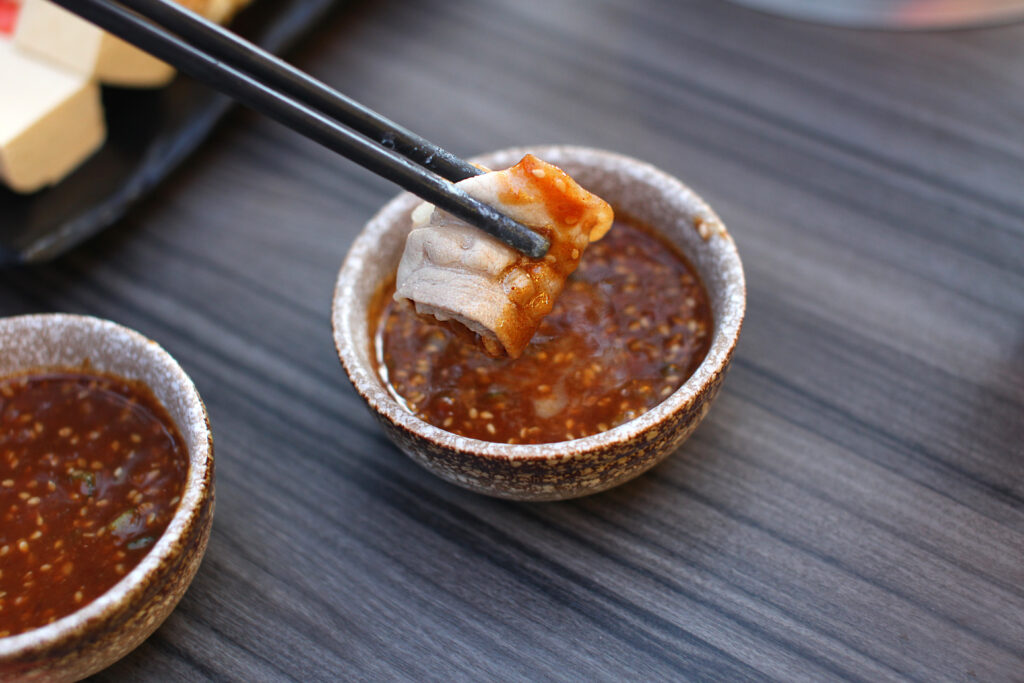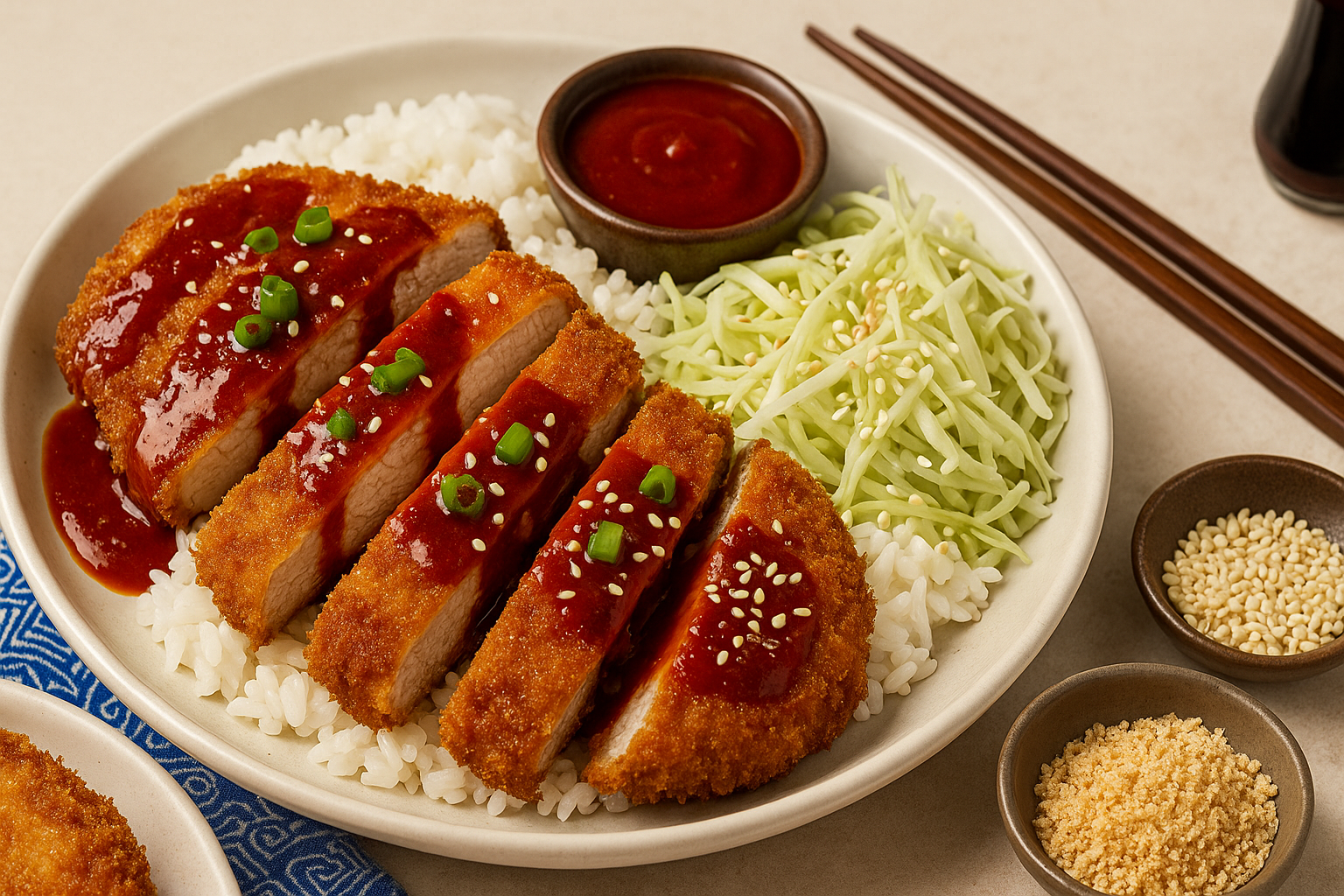Now Reading: Homemade Gochujang Sauce: Sweet & Spicy
-
01
Homemade Gochujang Sauce: Sweet & Spicy
Homemade Gochujang Sauce: Sweet & Spicy
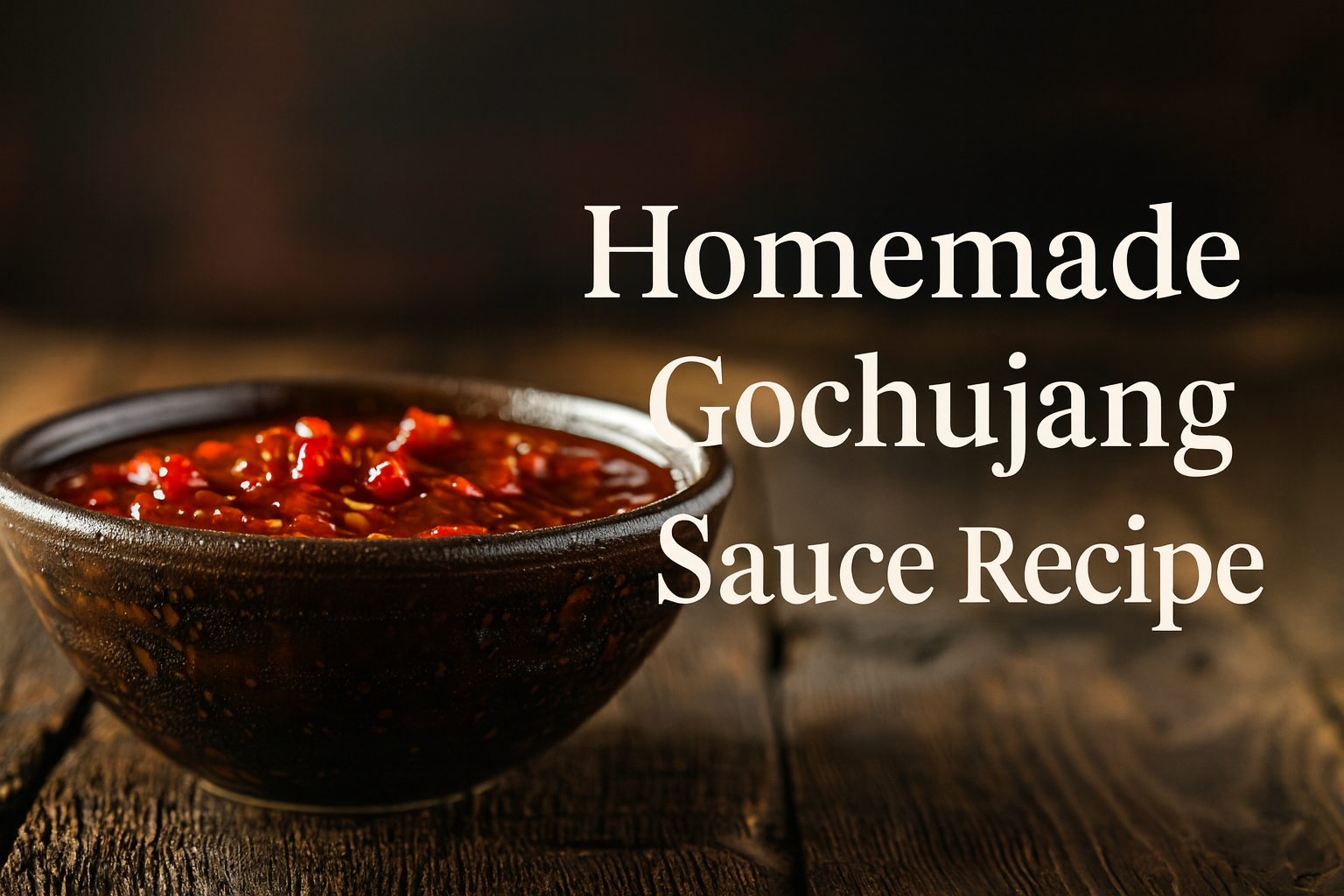
Move over, ketchup and mayo—there’s a new condiment in town, and it packs a spicy punch! Meet gochujang, the bold, beautiful, and slightly mysterious Korean chili paste that’s taking American kitchens by storm.
Whether you’ve tried it in a sizzling bibimbap bowl or drizzled over Korean BBQ, chances are your taste buds haven’t forgotten its deep umami flavor. But what exactly is gochujang, and can you make this magical sauce at home? The answer is a big spicy YES.
Let’s dive into what makes gochujang sauce so special—and how you can whip up your very own homemade version that’ll have you dipping, drizzling, and marinating everything in sight!
What is Gochujang?
Gochujang (pronounced go-choo-jahng) is a thick, fermented red chili paste that’s a staple in Korean cuisine. It’s made from gochugaru (Korean red chili flakes), glutinous rice, fermented soybeans, and salt, creating a sauce that’s spicy, slightly sweet, savory, and umami-packed all at once.
Unlike Western hot sauces that hit fast and fade, gochujang builds slowly, delivering heat that lingers with a rich, earthy depth. It’s not just about spice—it’s about flavor.
A Little History: The Origins of Gochujang
Gochujang has been around for centuries. The earliest records date back to the 18th century in Korean cookbooks, but its roots go even deeper. Koreans originally made gochujang by fermenting chili powder with rice and soybeans in large clay pots called onggi, letting the mixture develop flavor over months.
This fermentation process is key. It gives gochujang its iconic, funky, complex taste that can’t be replicated with just chili and sugar. Traditionally, families made batches that would last through the seasons, just like how we stock up on BBQ sauce or hot sauce in the U.S.
Now, you can find it in every Korean home—and increasingly in American ones, too.
Gochujang Sauce vs Gochujang Paste
Quick note: Gochujang paste is the OG version—the thick, sticky, concentrated chili paste you’ll find in tubs at Asian grocery stores. Gochujang sauce, on the other hand, is a slightly thinner, more versatile version made from that paste. Think of it like turning tomato paste into pasta sauce. It’s perfect for dipping, marinating, and drizzling.
So today, we’re turning paste into homemade gochujang sauce—your new favorite condiment.
Easy Homemade Gochujang Sauce Recipe
Ready to make some magic? Here’s how to whip up a simple gochujang sauce with pantry-friendly ingredients.
Ingredients
Directions:
- In a bowl, combine the gochujang paste, soy sauce, vinegar, honey, sesame oil, and garlic.
- Mix until smooth and glossy. Add a splash of water if you want it thinner for drizzling.
- Taste and adjust: Want more heat? Add a pinch of gochugaru. Sweeter? A touch more honey. Saltier? Dash of soy.
- Store in a jar in the fridge for up to 2 weeks.
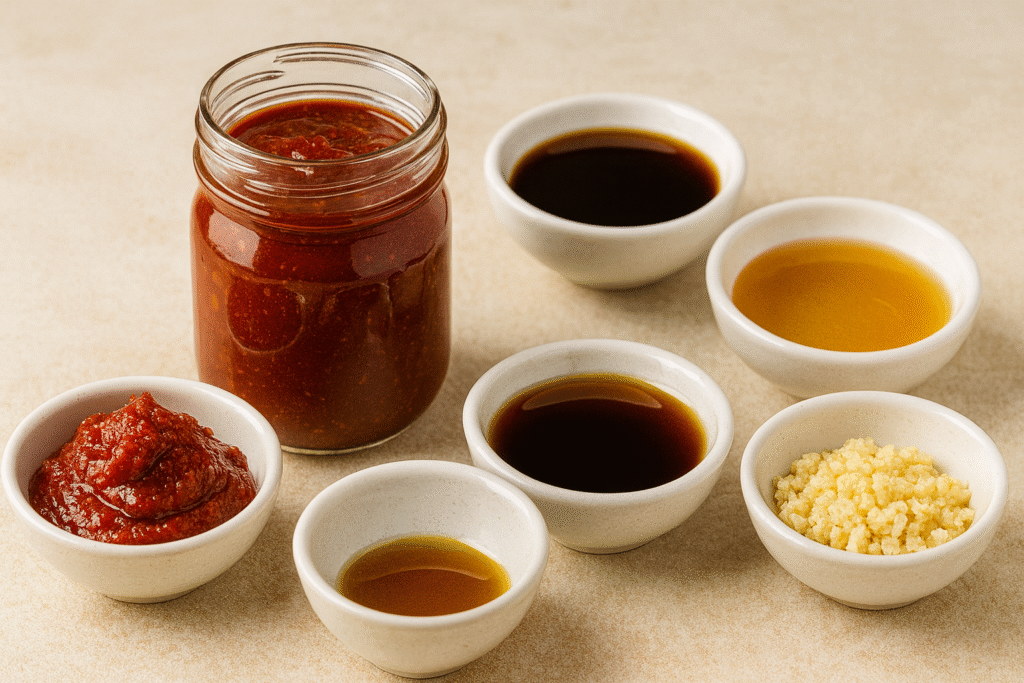
That’s it! You’ve just made your very own Korean chili sauce at home. No fermentation required.

How to Use Gochujang Sauce
This bold red beauty is incredibly versatile. Here are some fun, delicious ways to use your gochujang sauce:
- Grilled Chicken Marinade – Slather it on for sweet heat
- Bibimbap Drizzle – A must-have on rice bowls
- Dipping Sauce for Fries – Game-changer alert
- Spicy Salad Dressing – Mix with mayo or Greek yogurt
- Burger Topping – Add to mayo for a spicy gochujang aioli
- Glazed Salmon – Brush on during the last few minutes of baking

Where to Find Gochujang in the U.S.
Not sure where to get gochujang? You’re in luck. Thanks to the rising love for Korean food in the U.S., gochujang is becoming a pantry staple. Look for it in:
- Asian grocery stores (like H Mart)
- The international aisle at stores like Whole Foods, Walmart, and Trader Joe’s
- Online retailers like Amazon
Pro tip: Brands like CJ Haechandle and Chung Jung One are popular and reliable.
Is Gochujang Spicy?
Yes… But in a good way! Gochujang is moderately spicy, not blow-your-head-off hot. It has a slow burn that balances beautifully with its sweet and savory base. If you’re spice-sensitive, just start with less in your recipes—you can always add more.
Craving More? Try It with Korean Pork Cutlets!
Now that you’ve mastered homemade gochujang sauce, it’s time to put it to delicious use. One of our favorite ways to enjoy this spicy, umami-rich condiment is over crispy, golden pork cutlets.
Check out our full recipe for Korean Pork Cutlets with Spicy Gochujang Sauce – a crispy, saucy fusion dish that’s a guaranteed crowd-pleaser!
FAQs
What does gochujang sauce taste like?
Gochujang sauce has a unique blend of spicy, sweet, savory, and umami flavors. It starts off slightly sweet, followed by a mellow heat that builds gradually. Thanks to the fermentation process, it also has a deep, rich, slightly funky taste that makes it unlike any other chili sauce.
Is gochujang really spicy?
Not overwhelmingly! Gochujang is moderately spicy, especially compared to Western hot sauces. It has more flavor depth than pure heat. If you’re sensitive to spice, start with a small amount and adjust to taste.
What can I use if I don’t have gochujang?
A quick substitute is a mix of Sriracha, miso paste, and a bit of honey or sugar. While it won’t replicate the full fermented flavor, it works in a pinch for sauces or marinades. Still, for authentic Korean flavor, nothing beats the real thing!
How long does homemade gochujang sauce last?
Stored in an airtight container in the refrigerator, your homemade gochujang sauce should last up to 2 weeks. Always use a clean spoon when scooping to keep it fresh and flavorful.












